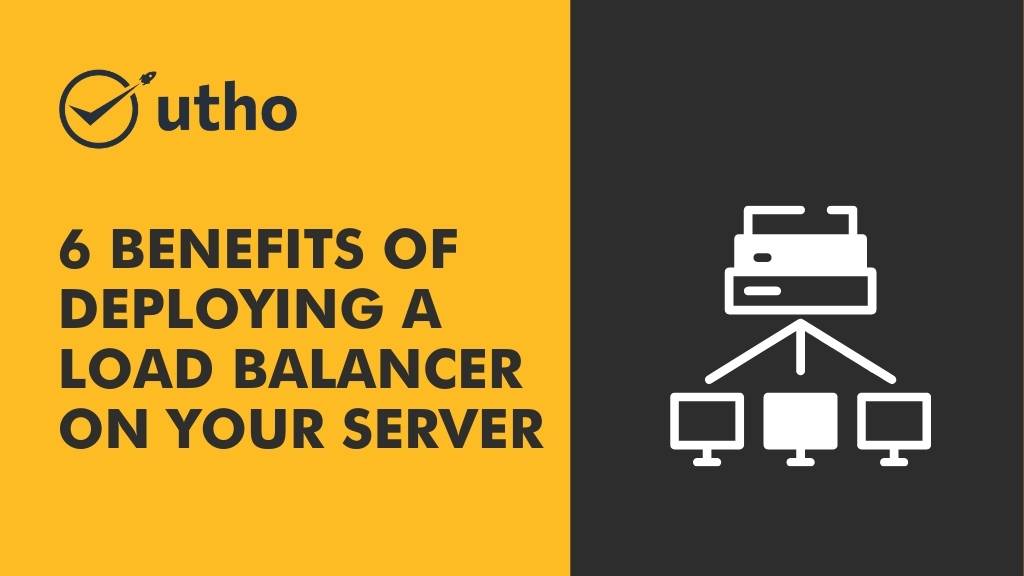Cloud deployment models—private, public, and hybrid—are important in software development. They have a significant impact on scalability, flexibility, and efficiency. Choosing the right cloud model is key to success. It affects factors like cloud architecture, migration strategies, and service models. These models include Platform as a Service (PaaS) and Infrastructure as a Service (IaaS).
Today's fast-paced environment values DevOps. Choosing the right cloud model is key for development teams. It helps streamline processes, improve collaboration, and accelerate time to market. Organizations can choose a cloud model that matches their goals. They can do this by considering factors like security, compliance, efficiency, and cost. The model should also promote innovation. It should give an edge in the digital world.
What is a cloud deployment model
The cloud deployment model is structured. It combines hardware and software. This combo enables real-time data availability over the Internet. It defines the ownership, control, nature and purpose of the cloud infrastructure.
Companies in many industries are using cloud computing. They use it to host data, services, and critical applications. Using cloud infrastructure helps companies reduce the risk of data loss. It also improves security and flexibility.
Understanding Your Cloud Deployment Options: The Basics
Private Cloud
A private cloud is for one organization only. It offers more control, security, and customization than other cloud models. You can host it on-site or with third-party service providers. Private clouds are ideal for organizations with strict security or compliance requirements. They allow direct infrastructure management, ensuring personalization and data protection. Technologies like Kubernetes handle private cloud infrastructure management and scaling.
Advantages of the private cloud deployment model
Cloud computing provides several deployment models designed to meet diverse organizational requirements.
Enhanced security
Private clouds use a dedicated infrastructure. It's kept sensitive data isolated and safe from unauthorized access.
Configuration options
Organizations can tailor private clouds to their needs. This includes hardware, security, and compliance.
Compliance
Strictly regulated industries, like healthcare or finance, can use private clouds. They use them to ensure compliance with standards.
Resource management
Private clouds provide full control over computing resources. They also control bandwidth and network settings. This control optimizes performance and resource use.
Less reliance on external service providers
Relying less on external cloud providers cuts the risk. They cause outages and disruptions.
Internal Management
Organizations opt to oversee cloud infrastructure in-house. They want to keep full control over data center operations. They also want to have control over maintenance and security rules.
Mitigating Public Cloud Risks
Private clouds reduce public cloud issues. These include data independence, vendor lock-in, and shared infrastructure risks.
Public clouds
Public clouds are provided by third-party vendors over the Internet and are available to anyone. They offer scalability, they are cost-effective, and they are flexible. They are ideal for organizations that want to avoid managing their own infrastructure. Public cloud services let organizations access resources when needed. They pay only for what they use. However, the info is hosted with other users. So, it needs strong security.
Advantages of the public cloud deployment model
Availability
Public clouds provide easy access to much infrastructure and services over the Internet. They enable global scale and collaboration.
Cost-effectiveness
In the distribution model, organizations pay for the resources they use without upfront investment in hardware or infrastructure. This is useful for startups and small businesses.
Scalability
Public cloud services allow organizations to quickly add or remove resources as needed. This ensures they run well and cheaply during busy times or sudden spikes in work.
Role of large service providers
Leading service providers, like AWS, Google Cloud Platform (GCP), and Microsoft Azure, offer many services (IaaS, PaaS, and SaaS). These services let organizations easily build, deploy, and manage. . applications
Vendor expertise
They have lots of expertise and resources. They include AWS, Microsoft Azure, and Google Cloud. They use them to keep up and improve their infrastructure. They also use them to ensure reliability, security, and performance.
Avoid vendor lock-in
Despite vendor lock-in. Interoperability standards and many service providers allow organizations to keep the flexibility of cloud services.
Privacy concerns
Public cloud providers use strong security measures. They also have compliance certifications. They use these to address privacy concerns. They also use them to ensure data protection and regulatory compliance across industries.
Hybrid Cloud
Hybrid clouds integrate the strengths of both private and public clouds. They offer flexibility, scalability, and the ability to meet specific workloads. They enable seamless integration. It connects on-premises infrastructure to public cloud services. This connection makes it easier to migrate and optimize workloads. This setup is ideal for obeying rules or adding resources. It lets you keep control of sensitive data and important workloads.
Advantages of the hybrid cloud deployment model
Security
Hybrid clouds let organizations keep sensitive data and critical workloads in a private cloud. They can use the public cloud for less sensitive tasks. This segmentation helps maintain data control and security.
Flexibility
Hybrid cloud models enable resource allocation based on workload. They ensure the best use and performance.
Scalability
Organizations can use public clouds to handle changing workloads. They can do this to ensure low cost and good performance during busy times or sudden spikes in demand.
Disaster recovery
Sharing workloads between private and public clouds enables good disaster recovery. It ensures business continuity if a single cloud fails.
Compliance
Hybrid clouds help organizations meet some rules. They do this by keeping sensitive data in private clouds. They also get the benefits of the public cloud.
Optimization
By using both private and public clouds, organizations can optimize their cloud computing strategy. They can do this to meet changing business needs.
Hybrid cloud models provide flexibility, scalability, and security. They are needed to optimize cloud strategies and meet the diverse needs of modern businesses.
Community cloud
A community cloud is shared. Multiple organizations with similar concerns use it. These concerns include compliance requirements and industry standards. It provides a platform for collaboration. Here, organizations can share resources and infrastructure. They can do so while keeping their data isolated and secure. They're perfect for niche industries. They're also for those with specific regulations or security needs. Community clouds foster teamwork and solve common problems.
Community Cloud Advantages
Shared Resources
Organizations with similar needs can share resources and infrastructure. This cuts costs and improves efficiency.
Collaboration
Community clouds help organizations collaborate. They're in the same industry or have similar requirements.
Security and Compliance
The clouds keep data isolated and secure. They meet specific security and regulatory rules.
Cost-effective
Sharing infrastructure between multiple organizations helps cut costs. It's cheaper than private clouds and safer than public clouds. It also provides better security and compliance.
Community clouds offer a balance between shared resources, collaboration, and tight security. They're ideal for organizations with shared goals and needs.
Multi-Cloud Strategies
The multi-cloud model uses the services and resources of several cloud providers. It does this instead of relying on just one. This strategy lets organizations use the strengths of different cloud platforms. These include public clouds like AWS, Azure, or Google Cloud. They also include private or community clouds. Using them lets organizations optimize workloads and meet specific business goals.
Advantages of the Multi-Cloud model:
Flexibility
Choose the best cloud provider for each task. Base the choice on factors like performance, price, and special features.
Redundancy and Resilience
Splitting work between multiple providers reduces the risk. It protects against downtime or data loss if one provider's system fails.
Avoid supplier lock-in
Using many providers prevents reliance on one and gives more freedom. You can change or bargain with suppliers.
Access to special services
Different service providers offer unique services and features. Multi-cloud access allows access to a wider range of features.
Savings
Use low prices and discounts from different providers. They reduce cloud service costs.
Things to consider when managing multiple cloud providers:
Integration and interoperability
Make sure communication and data move smoothly between different cloud services and environments.
Consistent security practices
Apply consistent security measures and compliance standards across all cloud providers. This will reduce security risks.
Cost management
Track and cut costs on multiple cloud providers. Avoid overspending and maximize efficiency.
Training and skills development
Give IT staff training and resources. This will help them manage and operate in a multi-cloud environment.
Operating system compatibility
Make sure systems in different clouds support different operating systems. This will avoid compatibility issues.
The multi-cloud model gives organizations flexibility, agility, and access to many services. However, you need careful planning and management to get its benefits. You also need to avoid its potential challenges.
Critical Aspects of Cloud Deployment
We just discussed cloud deployment and service models. Now, let's delve into the most important parts of deploying cloud solutions well.
Security and Compliance
Data security and compliance are top priorities in cloud computing. Protecting confidential information is critical. This means complying with industry regulations such as GDPR, HIPAA, and PCI DSS. These rules are key to keeping customer trust and complying. Cloud service providers use many security measures.
These include intrusion detection, access control, and encryption. Organizations must also use strong security procedures. These include access controls and regular audits. They ensure data protection and regulatory compliance.
Cost management
Managing cost well is key. It helps avoid surprises and optimize cloud use. Although cloud services operate on a pay-and-expenditure model. Costs can add up without proper monitoring and planning. Companies must develop comprehensive cost plans, monitor usage and optimize resource allocation.
Using tools from cloud service providers or third-party solutions can track costs. They can also analyze trends to help manage costs. Flagging resources, setting budget alerts, and regularly reviewing billing information are effective strategies. They help to manage expenses well.
Performance and Reliability
Reliability and optimal performance are critical for mission-critical applications in cloud deployments. Organizations should judge cloud providers on factors. These include storage speed, data transfer speed, and network latency. They should do this to ensure performance meets workload needs.
Using appropriate instances and storage options can further optimize performance. SLAs ensure reliability. They guarantee availability and performance. Adding redundancy and fault tolerance across many activity zones or regions increases reliability. It also minimizes downtime.
Integration and Migration
Moving cloud data and applications requires careful planning. This is to reduce disruption and ensure a smooth transition. Companies must assess their IT infrastructure. They must set migration priorities. They must pick the right tools and make a migration schedule. It's critical to keep the business running.
This requires seamless integration with existing on-premises systems and other cloud services. Evaluating the integration options of cloud service providers is key. Using APIs, connectors, and middleware enables seamless connection in different environments.
Management and data management
You need it to manage data well and govern it. This is necessary to get the most from using the cloud. We have data management, storage, and lifecycle policies and processes. They keep data whole, secure, and obey regulations. Following standards for data classification, storage, and access control helps. Regular audits also improve data management. Tools and services for cloud-based data management make data operations faster. They also improve governance by ensuring responsible data use and following regulations.
With these in mind, organizations can deploy cloud solutions. They can improve efficiency and use the cloud to speed up growth.
Challenges and Solutions in Cloud Deployment
We will learn about the challenges of adding cloud services. And, we will learn about the solutions to these problems.
Privacy and Data Security
Challenges
Data security and privacy are paramount when deploying cloud services. The risk of unauthorized access is one factor. The need to follow regulations like GDPR, HIPAA, and PCI DSS adds complexity. This is as data protection requirements change.
Solutions
Use strong security measures. One example is encryption. It protects data in transit and at rest. Advanced Identity and Access Management (IAM) ensures that only authorized users have access. It reduces the risk of data breaches.
Availability and Downtime
Challenges
Service interruptions and downtime can disrupt business. They cause lost revenue and harm reputation. Cloud service providers are reliable. But, network problems, hardware failures, or software glitches can still cause outages.
Solutions
Improve availability with redundancy and fault tolerance strategies. Put services in multiple availability zones or regions. This ensures continuity if a local outage happens. Load balancing distributes traffic evenly between servers. This prevents one server from becoming overloaded.
Overspending and Cost Control
Challenges
Cloud costs can rise quickly. This can happen without proper monitoring and control due to overfunding or inefficient use of resources. Unexpected expenses can exceed budgets. This weakens the ROI of cloud services.
Solutions
Create a full cost management plan. It will control resource use and find cost savings. Use solutions from cloud providers or third parties. Use them to control and optimize costs. They ensure efficient use of cloud resources.
Integrating Legacy Systems
Challenges
Integrating cloud services into existing on-premises legacy systems requires careful planning. Old systems may not work with today's cloud tech. This leads to integration, data, and operational problems.
Solutions
Perform a comprehensive assessment of legacy systems and integration requirements. Use middleware. Use API gateways. They help cloud services talk to old systems. Use gradual migration to minimize disruptions, gradually integrate systems, and resolve compatibility issues.
By solving these challenges well, organizations can deploy cloud solutions. They can also simplify operations and use cloud capabilities to drive business growth.
Future Trends in Cloud Deployment
Let's explore the emerging trends shaping the future of cloud deployment.
Edge Computing
Edge computing is revolutionizing cloud deployment by bringing computation and data storage closer to data sources. Unlike traditional cloud models centralized in distant data centers, edge computing processes data at the network edge. This approach is ideal for applications requiring real-time data analysis, such as industrial IoT, autonomous vehicles, and smart cities. It reduces latency, improves processing speed, and conserves bandwidth by processing data locally before transferring it to the cloud.
Multi-Cloud Strategies
Businesses are increasingly adopting multi-cloud strategies to enhance resilience and avoid vendor lock-in. By leveraging services from multiple cloud providers, organizations can optimize cost, performance, and reliability. Multi-cloud deployments allow businesses to tailor their cloud environments to meet specific requirements and ensure redundancy. If one provider experiences downtime, critical applications can seamlessly transition to another provider.
Serverless Architectures
Serverless computing is transforming cloud application development and deployment. This architecture allows developers to focus on coding without managing infrastructure. Cloud providers dynamically allocate resources to execute code in response to events, enabling automatic scaling based on demand. Serverless computing charges organizations only for actual compute time used, offering benefits like reduced operational overhead, improved scalability, and cost-efficiency.
Integration of Artificial Intelligence and Machine Learning
Cloud services are integrating increasingly sophisticated artificial intelligence (AI) and machine learning (ML) capabilities. Cloud providers offer AI and ML services such as image recognition, natural language processing, predictive analytics, and automated decision-making. These services are accessible via APIs and can be seamlessly integrated into applications to enhance functionality, user experience, and business insights.
These trends in cloud deployment signify the evolution towards more efficient, scalable, and intelligent cloud solutions. Embracing these advancements enables organizations to stay competitive, innovate faster, and meet the growing demands of modern digital environments.
Takeaway
When choosing a cloud deployment model, evaluate how well it fits your application architecture. Aligning your architecture with the right cloud model is a critical decision. It is key to the future success of your organization.
Understanding each model's strengths and weaknesses empowers you. It lets you make informed decisions. These decisions increase efficiency and drive growth.
Utho allows users to deploy machines, databases and clusters according to their preferences. Linux machines are installed and ready to use in just 30 seconds.
We can customize settings. This includes image selection, processor type, and billing cycle. It can do this to fit their specific needs. For expert advice, visit www.utho.com and explore the best cloud deployment options tailored to your business needs.




